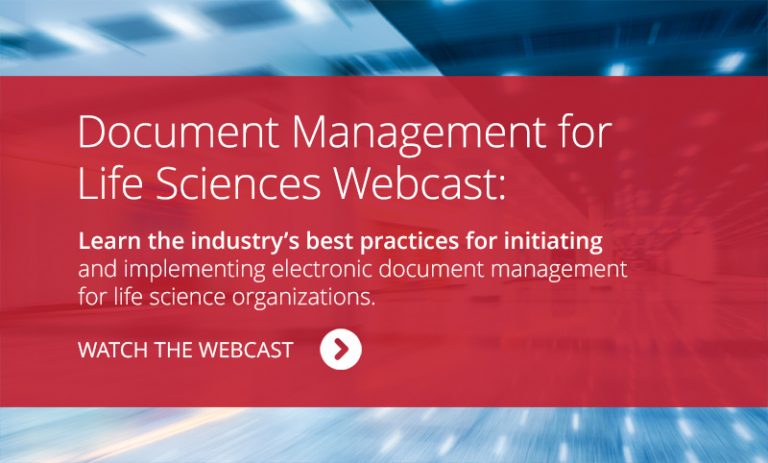January 23, 2017
Quality management, always an FDA focus during inspections, could become even more important in 2017 as FDA priorities take shape.
Quality Management Efforts Will Be Impacted In 2017
In late December, Director Janet Woodcock laid out some of the broader goals for 2017 around the same time Congress approved the epic 21st Century Cures Act. If all goes according to plan, the FDA will have more funding to do its job – including more inspections of life sciences manufacturers.
$500 Million For FDA Over Ten Years
The 21st Century Cures Act gives FDA a bonus of $500 million over 10 years to further fund an initiative to use real world evidence in regulatory decisions. That makes it all the more important for manufacturers to have a strong document management system in place to be able to organize, access, and have the ability to provide detailed data to the agency if requested.
More FDA Reviewers = More Scrutiny
What else can be done with $500 Million? Funds from the 21st Century Cures Act will allow the agency to increase compensation in an effort to attract more reviewers. More reviewers equals more scrutiny, experts generally agree.
FDA’s 2017 Direction Gleaned From 2016 Rules
The agency also issued a number of proposed and final rules in 2016 that signal some of its direction in 2017.
IND Application Report Requirements To Mirror Global Standards
In a proposed rule expected to be published in April, FDA said it would replace current requirements for reports submitted on IND applications. It would largely mirror existing global standards for the format, content and timing of the submissions.
Post Market Safety Reporting Regulations Finalized
In late 2017 it is expected that the FDA will finalize a rule to amend post market safety reporting regulations. The FDA has been contemplating this for more than a decade. This rule will feature helpful definitions of new terms and revised reporting deadlines.
Economically Significant Regulations for Compounders
Listed as a long-term action for 2017, the FDA plans to propose “economically significant’ regulations that would define conditions that would exempt compounders from fulfilling certain requirements for their drugs.
Combination Products: 5 Post Market Safety Report Elements
Quality management professionals should take note of to a recently issued final rule. Most of this rule goes into effect at the end of January. Life sciences manufacturers have a few important adjustments to make.
- Which Post Market Safety Report To Submit – The type of post market safety report required for combination products will be based on whether the products was approved through a drug, biologic or device application.
- Reports Based On Constituent Parts – Additional reports will be based on the constituent parts of the combination product. These include malfunction reports if the product includes a device, field alert reports in the case of a drug — or biological product deviation reports, as suggested by public comments following the rule’s initial proposal in 2009.
- Safety Information Shared Within 5 Calendar Days – Sponsors of different parts of a combination product must also share safety information with each other within five calendar days, including events involving death, serious injury or other adverse events.
- Periodic Safety Updates To FDA – Sponsors will now be required to include a summary and prove they understand data cited in previously submitted reports, such as five-day and malfunction reports, in their periodic safety updates to FDA. Products approved under medical device applications do not have to make periodic reports. Broadly speaking, this applies to combination products approved under an NDA, ANDA or BLA.
- Records Kept For At Least 10 Years – Combination product applicants must maintain records relating to their post market safety reports for the longest required record keeping period applicable to the combination product. Currently, that’s at least ten years.
2019: Electronic Submission Of MEIs
There are new requirements and implementation regarding valid electronic submission of Manufacturing Establishment Information (MEIs) according to a guidance that permits pharmaceutical manufacturers to streamline required information on the manufacturing establishments. FDA hopes the reorganization initiative will help eliminate some of the potentially outdated and erroneous information sometimes retrieved from other agency files.
In addition, sometime in 2019, MEIs contained in new drug applications (NDAs), abbreviated new drug applications (ANDAs) and biologics license applications (BLAs) will only be accepted through electronic submission. Manufacturers still using a manual document management process need to implement an automated document management system created with FDA compliance in mind like AssurX.
Does your #documentmanagement program incorporate the industry’s best practices? Attend our webinar now to find out. http://ow.ly/yBGf307EfrE
— AssurX (@AssurX) January 3, 2017
FDA Initiatives Amended By New FDA Chair?
Of course, some of these initiatives could be amended if President Trump chooses a new FDA Chair who has signaled he or she wants to move the agency in a significantly new direction. While Trump has not made an official choice yet, some have placed Jim O’Neill at the top of the list. O’Neill, a managing director at Mithril Capital Management, has suggested gutting the FDA’s charge to determine whether new medicines are effective before approving them for sale. “Let people start using them, at their own risk,” he said in a 2014 speech to a biotech group.
Will Your Quality Management System Provide Compliance in 2017?
2017 will be a year of uncertainty for medical device, pharmaceutical and general life science manufacturers and service providers. New requirements plus uncertain direction from an as yet unknown FDA Commissioner means your quality management department needs to be proactively prepared for just about anything. No more manual quality management processes. An automated and robust regulatory compliance + quality management system like AssurX can provide an extra layer of protection against overall uncertainty and more stringent FDA enforcement.

Learn how an intuitive and easily configurable document management solution as part of a robust quality management system will meet your needs while taking out the complexity typically associated with most document management solutions on the market today.


